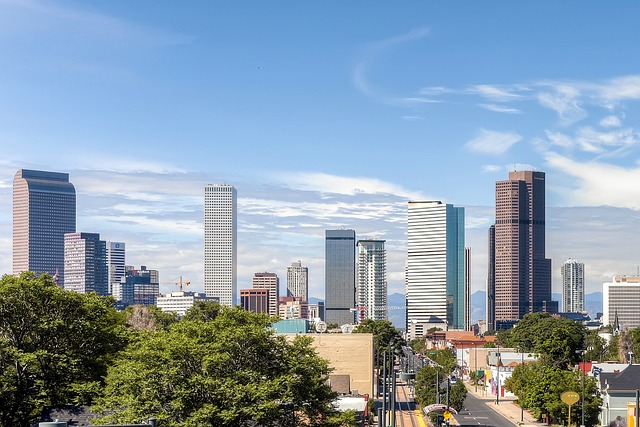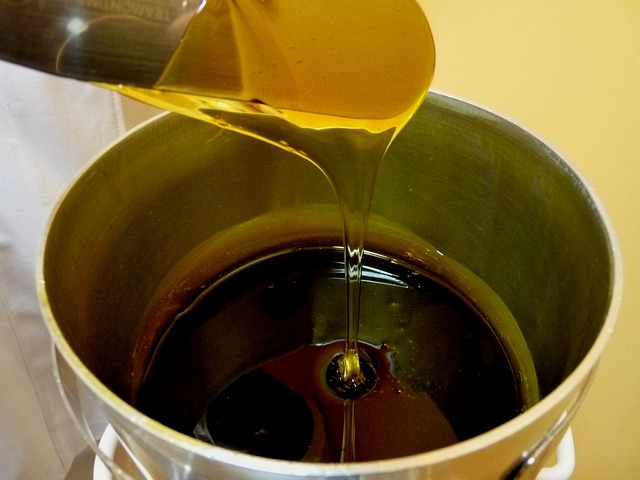Asbestos removal in Denver is strictly regulated to protect residents from health risks associated with hazardous material. Only licensed professionals can handle asbestos-containing materials (ACMs) during renovation, remodeling, or demolition projects. Common sources of asbestos include older heating systems and flooring tiles built before the 1980s. Removal follows stringent protocols including inspection, enclosure, removal, disposal, and cleaning. Selecting a reputable asbestos removal company with experience, insurance, and modern equipment is crucial for safe and effective removal. Post-removal care includes thorough cleaning, adherence to disposal regulations, and regular air quality inspections to prevent future exposure in Denver's construction landscape.
Asbestos removal in Denver is a critical task, given the city’s historical construction practices. This comprehensive guide explores the intricacies of asbestos removal, focusing on understanding its risks and navigating Denver’s regulations. We’ll walk you through identifying asbestos in your property, safe removal processes, choosing the right professionals, and post-removal care. By adhering to best practices, Denver residents can ensure a safer, healthier living environment after asbestos elimination.
- Understanding Asbestos: The Risks and Regulations in Denver
- Identifying Asbestos in Your Property: Signs and Common Sources
- The Process of Safe Asbestos Removal: Steps and Professional Techniques
- Choosing the Right Asbestos Removal Company in Denver: What to Consider
- Post-Removal Care and Prevention: Ensuring a Safe Environment After Asbestos Elimination
Understanding Asbestos: The Risks and Regulations in Denver

Asbestos, a once-prevalent building material known for its fire resistance and insulation properties, poses significant health risks when disturbed or removed improperly. In Denver, as in many places across the country, the handling and removal of asbestos are strictly regulated to protect residents and workers from its harmful effects. Prolonged exposure to asbestos fibers can lead to severe respiratory illnesses, including mesothelioma and asbestosis, emphasizing the need for professional and compliant asbestos removal practices.
Denver’s regulations regarding asbestos removal are designed to ensure safety and compliance with environmental standards. Local laws mandate that only licensed professionals equipped with specialized training and equipment can handle asbestos-containing materials (ACMs). This includes tasks such as identification, encapsulation, and safe disposal, preventing the release of hazardous fibers into the air or water sources during renovation, remodeling, or demolition projects. Proper management of asbestos is crucial for maintaining a healthy environment and safeguarding the well-being of Denver’s residents.
Identifying Asbestos in Your Property: Signs and Common Sources

Identifying asbestos in your property is a crucial first step for any asbestos removal in Denver project. Asbestos is a hazardous material that can be found in various forms and locations, often hidden within older buildings. Signs of asbestos exposure include disintegrating or peeling insulation, flooring tiles, or ceiling textures, especially in homes built before the 1980s. Crumbling or dusty materials, particularly in areas with poor ventilation, are red flags. Asbestos was commonly used in construction for its fire-resistant properties, so older buildings, insulation, and even certain types of roofing materials may contain it.
Common sources include old heating systems, boiler insulations, pipe insulation, and some types of flooring tiles and linoleum. If you suspect asbestos presence, professional inspection is vital before proceeding with any renovation or remodeling projects to ensure safe removal by certified asbestos removal companies in Denver.
The Process of Safe Asbestos Removal: Steps and Professional Techniques

The process of safe asbestos removal in Denver involves a series of meticulous steps and professional techniques designed to protect both workers and the environment. It begins with an extensive inspection to identify and map all instances of asbestos within a structure. Once located, the material is carefully enclosed to prevent its release into the air. The next step involves using specialized tools and equipment to remove the asbestos down to its source, ensuring no fibers escape during the process.
After removal, the contaminated materials are placed in secure, approved containers for proper disposal. All surfaces affected by asbestos are thoroughly cleaned with HEPA vacuum cleaners to eliminate any remaining fibers. Finally, the area is tested for residual asbestos to confirm safety before reopening. Professional asbestos removal companies in Denver adhere to strict guidelines and regulations, employing advanced methods to guarantee a safe and comprehensive removal process.
Choosing the Right Asbestos Removal Company in Denver: What to Consider

When it comes to choosing an asbestos removal company in Denver, it’s crucial to select a licensed and insured professional with extensive experience handling such hazardous materials. Asbestos removal is not a job for amateurs; it requires specialized equipment, training, and knowledge to ensure safety and compliance with local regulations. Look for companies that offer comprehensive services, from initial assessment and testing to safe disposal of asbestos-contaminated materials.
Consider the company’s reputation, customer reviews, and their adherence to industry standards. Ensure they provide detailed explanations of their processes, use modern equipment, and offer transparent pricing. Additionally, ask about their emergency response capabilities in case of unexpected discoveries during the removal process. Choosing the right asbestos removal company in Denver is an important step in ensuring a safe living or working environment free from health risks associated with asbestos exposure.
Post-Removal Care and Prevention: Ensuring a Safe Environment After Asbestos Elimination

After successful asbestos removal in Denver, proper post-removal care and prevention measures are essential to ensure a safe environment. This includes thoroughly cleaning all affected areas with specialized equipment and methods to eliminate any remaining asbestos particles. All waste materials containing asbestos should be disposed of according to local regulations, typically involving licensed haulers who understand the hazardous nature of these materials.
Preventing future asbestos exposure involves regular inspections and maintenance. Regular monitoring of air quality inside buildings previously containing asbestos is crucial. Additionally, implementing strict protocols for renovation or remodeling projects can help prevent asbestos re-release. Proper training and equipment for anyone working in such environments are vital to ensure long-term safety and maintain a healthy atmosphere.
Asbestos removal in Denver is a critical process that requires professional expertise to ensure safety and comply with local regulations. By understanding the risks, identifying asbestos sources, and choosing the right removal company, residents can mitigate health hazards and contribute to a safer environment. Proper post-removal care further solidifies the elimination of this harmful material, making it a collaborative effort between individuals and reputable asbestos removal services in Denver.
